The YES Drop-In Center Needs YOU!
Hi readerfriends,
With the holiday season in full swing, maybe you’re looking for new ways to reach out to others. So today I want to take a little break from editing ALL THE WORDS and spotlight a local organization that’s doing an incredible amount of good here in Baltimore. They do amazing work, and they could do even more of it if they had our help.
***
If you’re driving down Charles Street watching the classic old Baltimore rowhomes blur past, you might catch it out of the corner of your eye. A bold green-and-gray sign that looks like this:
This is the YES Drop-In Center.
Inside is a staff of 7 people dedicated to helping homeless youth in Baltimore, including young people in the LGBTQ+ community who need a safe space. The YES Drop-In Center meets immediate needs like meals, showers, and clothing—but beyond that, they also work to give young people the skills and resources they need to take on leadership roles in our local community.
I met program coordinator Harriet Smith this summer, while I was organizing a food drive for YES. Today it’s my honor to welcome Harriet and her colleague, Nadja Bentley-Hammond, for a Q&A about the work they do. Harriet and Nadja shared some great insights, including an awesome YES success story, their plans for the coming year, and the biggest challenges they face. Read on to find out more about YES, and learn how you can help them out now (direct links are at the bottom of this post).
Q. I know YES grew out of the work of the Baltimore Homeless Youth Initiative Youth Leaders, but can you give us an insider’s look at how your center came together? What sparked the idea? How did you bring YES from dream to reality?
A. A group of homeless and formerly homeless youth came together once a week through the BHYI (Baltimore Homeless Youth Initiative) to advocate and talk about things youth needed in Baltimore City to make it easier to get through homelessness. We came up with a center where youth can come and be comfortable, chill, take a shower, get things done in one spot—i.e., help getting IDs and Social Security cards, applying for benefits, and seeing a doctor or therapist. We then looked into other drop-in centers in the United States to see if there was anyone doing something similar, and we found out there were a few to a certain extent. However, no other centers exist—that we know of—that assist homeless youth with a peer-youth led model.
Q. That brings me to my next question: One of the great things about YES is that it goes beyond creating a safe space—you also provide training and supports to previously homeless young adults, so they can eventually act as service providers for their peers. Can you tell us some of the specifics behind this part of your mission?
A. We all decided that YES would be youth led, meaning youth would be the face of the organization, do outreach, serve in the community, advocate, and do peer to peer counseling. We believe that YES is a more comfortable space because youth that have overcome homelessness are directly assisting youth who are trying to overcome homelessness in a positive and supportive space with the help of our allies. Youth participants are actively encouraged to become volunteers and through that experience obtain the necessary skills and knowledge to become the future of the organization.
Q. You’re devoted to “creating a physically and emotionally safe space” for each young person who comes to your center. How do you approach that important task, starting from the moment a young adult arrives at YES for the first time?
A. When you first come to YES we present and explain our Community Agreements that all youth and staff agree to uphold. Additionally, we are strong believers in creating a culture of respect, not only having and enforcing rules. We find it important to check in with the participants as they arrive in order to allow them the opportunity to vent some of the frustrations and other strong emotions they are carrying on their way in.
We are also vigilant about de-escalation and teaching non-violent conflict resolution. However, we are careful not to dismiss the survival skills they’ve built for the street; rather, we ask for a different approach within our walls. We also find that YES’s peer-to-peer model assists in creating a culture at YES where youth feel like their experiences are understood and validated. Staff members who have been through periods of youth homelessness can empathize in ways which staff that have never experienced homelessness cannot. Additionally, youth participants get to witness the leadership and competence of their peers—which we hope helps to combat the negative messages homeless youth are steeped in.
Q. Your center’s only been around for a little over a year, and you’ve already helped so many young people. Could you share a story that’s really stuck with you—something that illustrates how important your mission is and why you do what you do?
A. Over the last year YES has served as a ‘bridge’ between youth (teens and young adults) and the services they need to become more stable adults, such as mental health providers, shelters and transitional housing, substance abuse treatment, legal advocacy, primary and preventative health care providers, and so on. In other words, YES is an easily accessibly conduit between young people experiencing homelessness and the other service providers who seek to assist them—service providers who often have specific requirements for clients necessitating a service like YES to help youth by getting vital documents, filling out applications, getting on waitlists, and the like.
We think there are two examples that illustrate this unique position, and the perseverance of the young people we have the pleasure to meet through the Drop-In Center.
A young man with developmental delays came to YES a few days after his eighteenth birthday this past winter, because he was kicked out by his adoptive mother. By working with YES, he was able to gain access to emergency shelter, get his vital documents, food stamps, and other benefits, and eventually get on waiting lists for transitional housing programs. After seven months he became housed, and has become involved in advocating for young people experiencing homelessness.
While some readers may be appalled at the length of time it took for a young person to have a stable place to lay his head each night, this is not at all unusual and it takes places like YES to offer the assistance and support to successfully apply and wait for housing. Now that he is housed, our relationship with this young person has not ended: he needs to make sure he is able to maintain his benefits, his connections with mental health providers, and move into an even more stable housing program. One wonders what his journey would look like without a place to be patiently listened to, without a place to be off the streets during the afternoon hours, and without advocates in his corner helping him problem-solve the barriers to housing and other services.
Often we think that young women fleeing intimate partner violence become homeless by leaving their partner. However, there are many young people who are homeless with an abusive partner. One young woman came to YES wanting desperately to escape from her partner—both of whom where living outside together. Believing her life was in danger, she asked YES staff to help her leave him. Staff advocated for her with domestic violence survivor services to ensure that they would consider her case.
While her situation is not usual, many of these service providers are unaware of how prevalent abusive relationships are among homeless youth. She was eventually able to leave her boyfriend by being offered alternative housing. Through her bravery and hard work, she got the support she needed to value her own well-being and advocate for her entry into survivor services.
These two stories remind us how important it is to have places like YES; places that offer encouragement and act as a ‘bridge’ from homelessness to the service providers that house, treat, and support the long-term stability of young people. While the successes lie squarely with the young people who continually illustrate their own courage and determination, we believe that YES has an important role to play in advocating for and offering reassurance to homeless youth.
Q. What’s the biggest day-to-day challenge your center faces? What would help you resolve it?
A. We are most challenged by the number of youth seeking assistance while they are homeless/unstably-housed. We find ourselves full almost every evening we open the Drop-In Center. The number of youth who come to YES is ever-increasing. We are in constant need of support from Baltimore communities who can help us better support the youth who seek assistance from YES.
We are also challenged by the significant scarcity of age-appropriate housing and shelter options for youth experiencing homelessness. Your readers can assist here too by advocating for more and better homeless services, for policies that can prevent homelessness, and address the roots of homelessness and poverty.
Q. What’s next for YES? What are you most excited to accomplish in 2014?
A. One of the things that make YES so unique is our dual mission:
1. operating a drop-in center where youth can meet their basic needs (meals, clothes, use of bathrooms, computer lab, etc.) while supporting these youth to become connected to much-needed health, housing, education, employment, and legal services,
2. AND supporting homeless and formerly homeless young people in developing their leadership and engagement in community advocacy on behalf of their peers.
Over the next year we will continue to improve YES’s capacity in both of these areas. We do, however, have a very exciting plan to expand the latter goal. YES is planning to begin a new training program, whereby youth participants and YES staff offer half-day workshops to service providers interested in learning more about the experiences of homeless youth.
YES staff has over 15 years combined experience in youth and homeless services delivery, and the youth that participate at the Drop-In Center have well over 100 years combined experience navigating homeless and youth services.
The YES Valedictorians—a group of youth at YES working on this endeavor—will develop and participate in facilitation and public speaking trainings. Together with staff, they will build an educational experience that will equip case managers, health professionals, teachers and so on with a practical and deep knowledge of youth homelessness. Thus encouraging youth to speak their truths to the very people tasked to assist them, and offering service providers a chance to learn new skills and understand a different perspective of service delivery.
Please stay tuned to our website for details of this emerging program—and we’re working on offering CEUs and CLEs for those professionals that need them!
Q. Best of luck with your new training program—it sounds like a wonderful expansion of the good work you’re already doing.
So the holidays are upon us, and I know this is a time when many people count their blessings and reach out to others. For readers who want to support the YES Drop-In Center but don’t know where to start, can you tell us your greatest area(s) of need and what we can do right now to help?
A. We are constantly grateful for the support that YES receives. We are always in need of monetary support, and donations of items that the youth need to meet their most basic needs. Please go here to see our website’s wishlist of supplies and our Amazon Wishlist. We just can’t stress enough how necessary support from people, like your readers, is to our continued success.
Special thanks for Harriet and Nadja for taking the time to answer these questions. If you’re thinking about making charitable donations this holiday season, please keep the YES Drop-In Center in mind. I know times are really tight right now, but every little bit you can donate would help YES make a world of difference for the young adults who come through their doors.
Explore ways to help YES
Take a virtual tour of the YES Drop-In Center
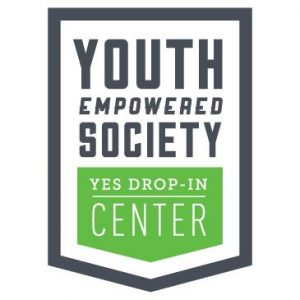
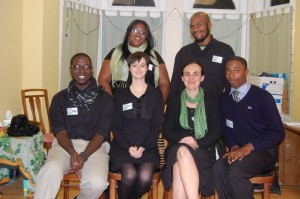
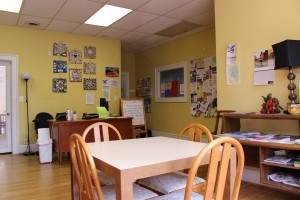
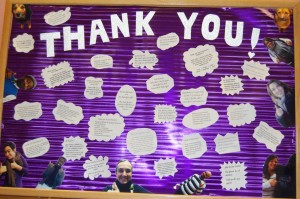

Great post, JC. I’d never heard of this place; thank you for writing about it. I’ll be sharing this post!
Thanks so much, Megan! They are AWESOME folks. Anything you could do to help spread the word would be greatly appreciated. 🙂